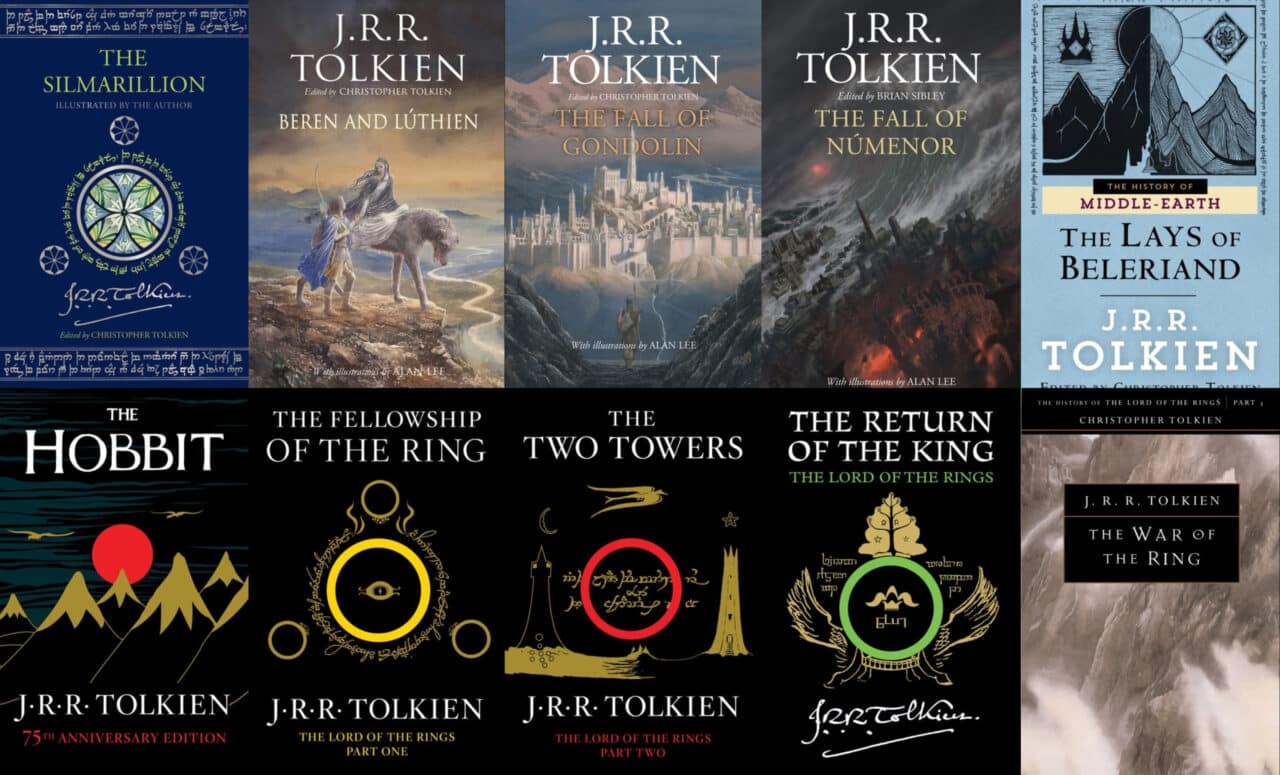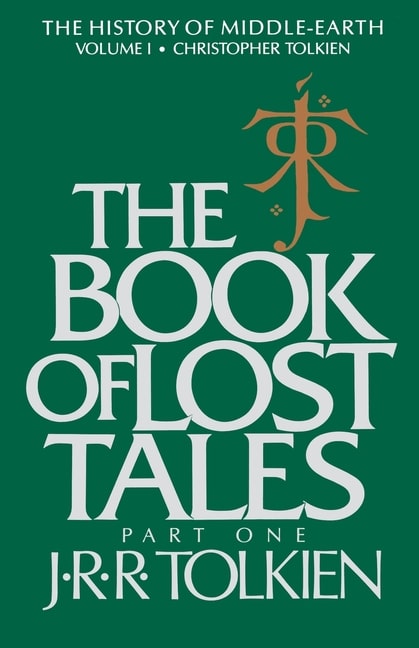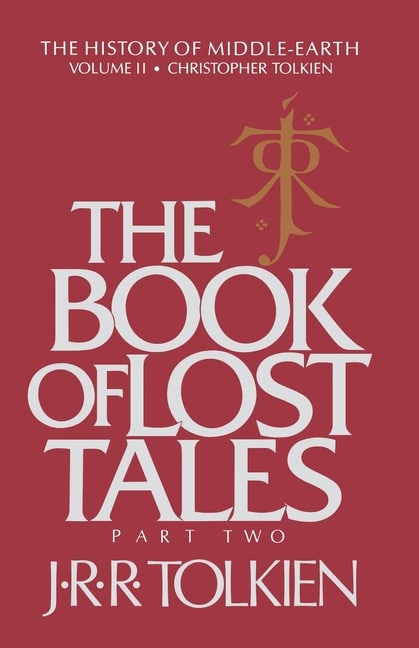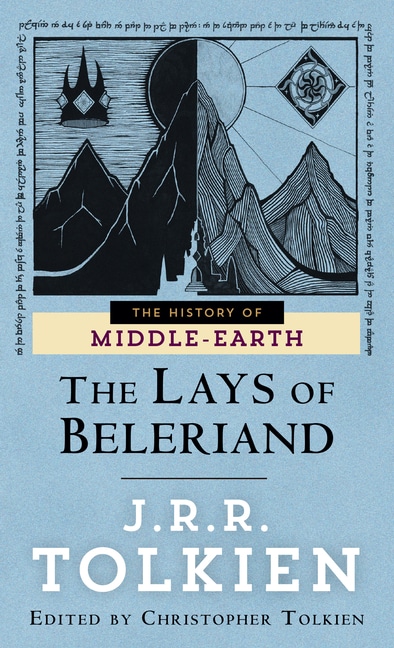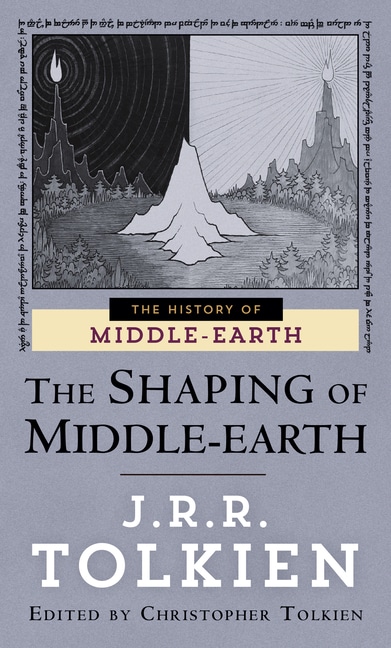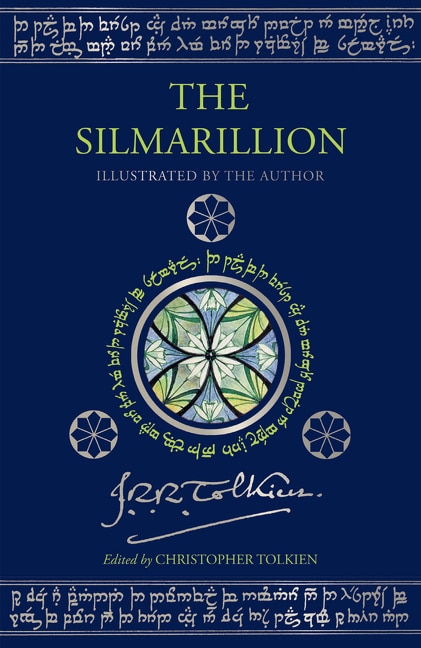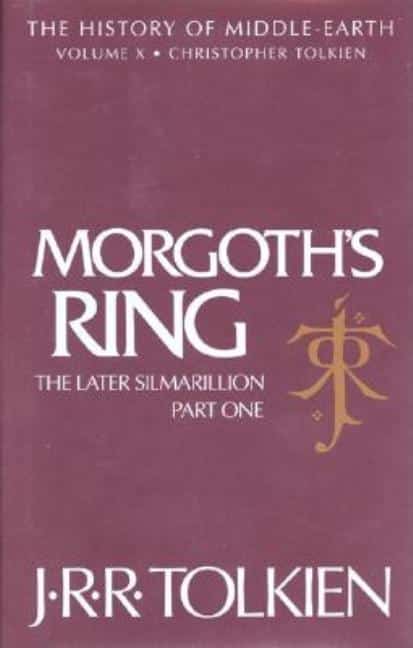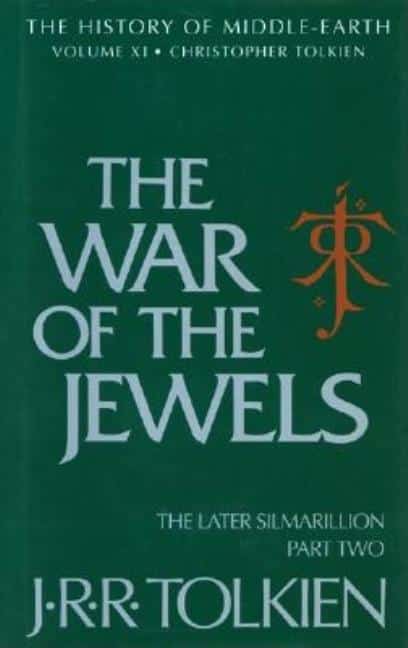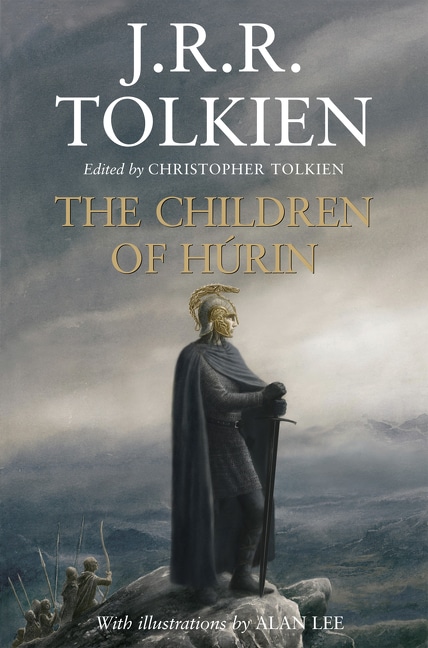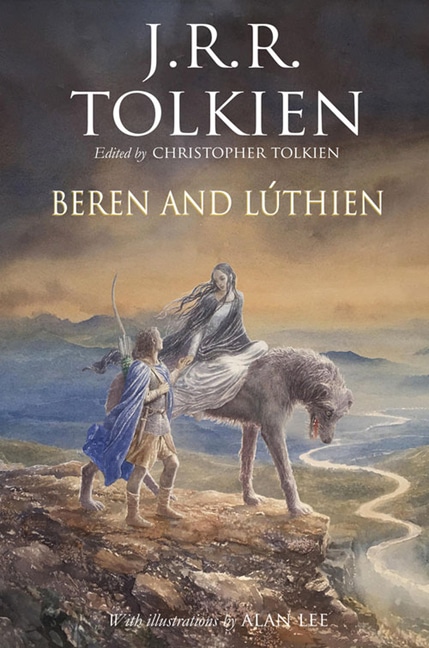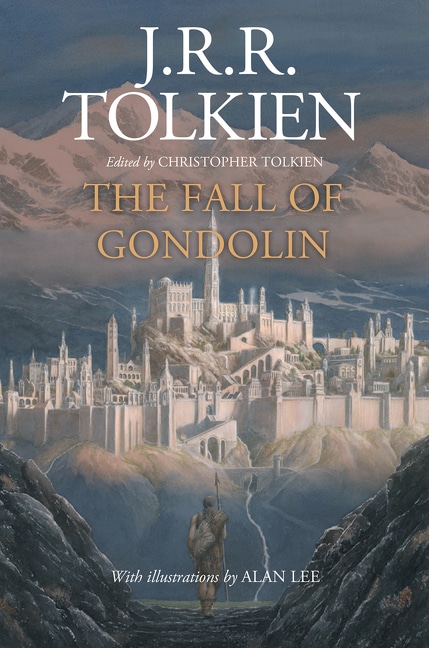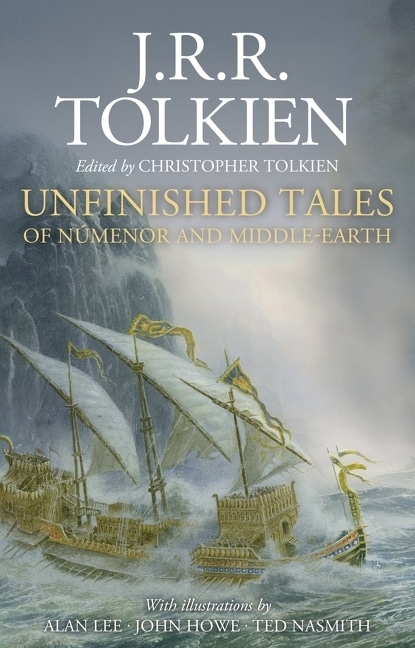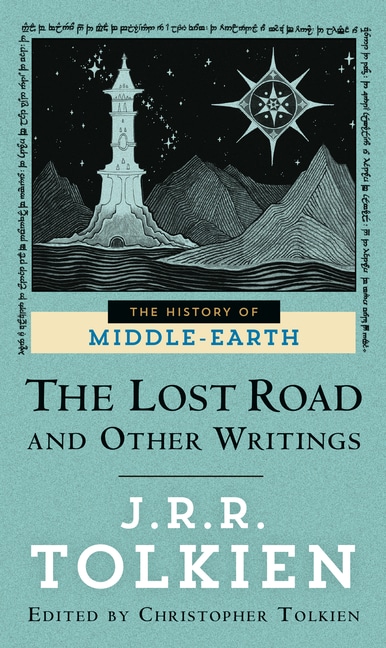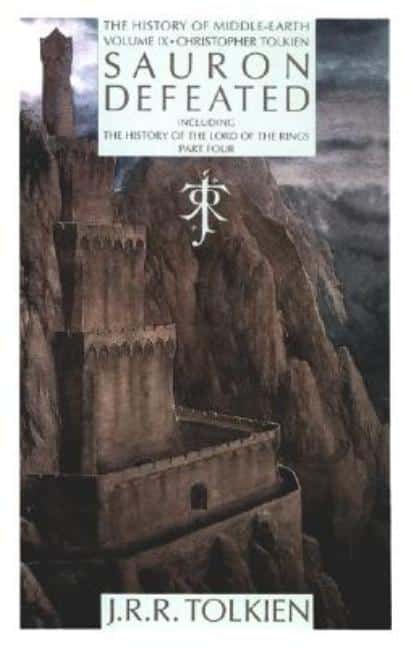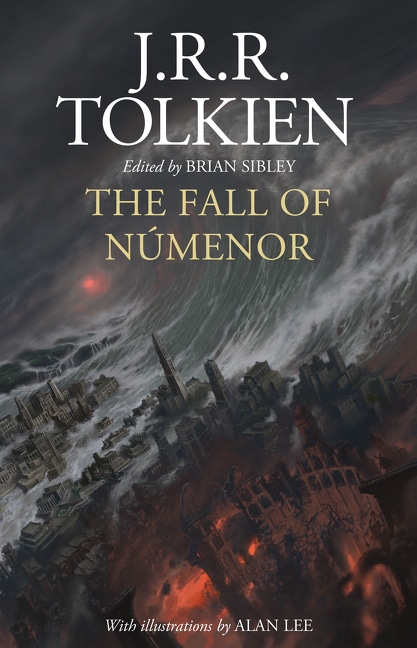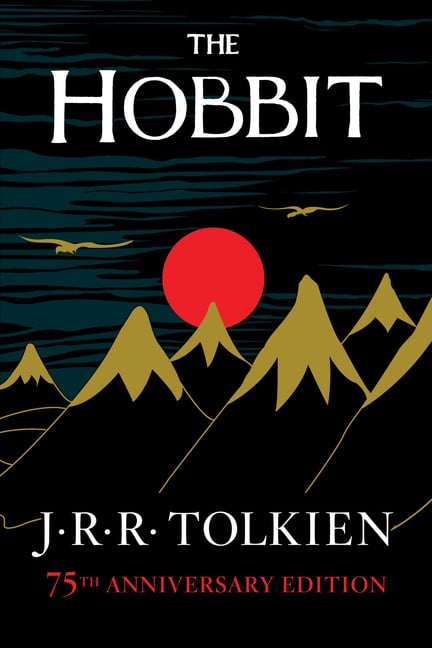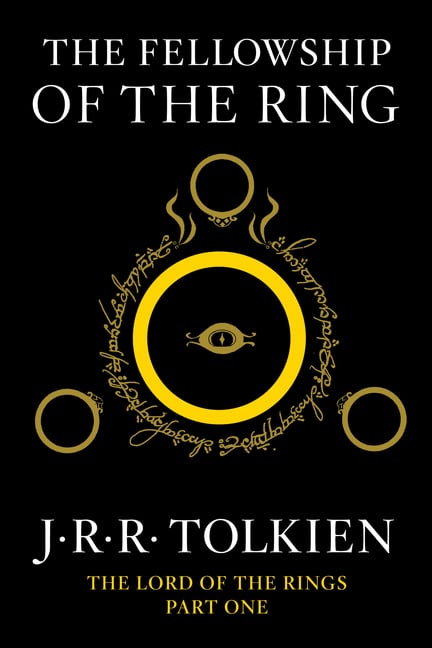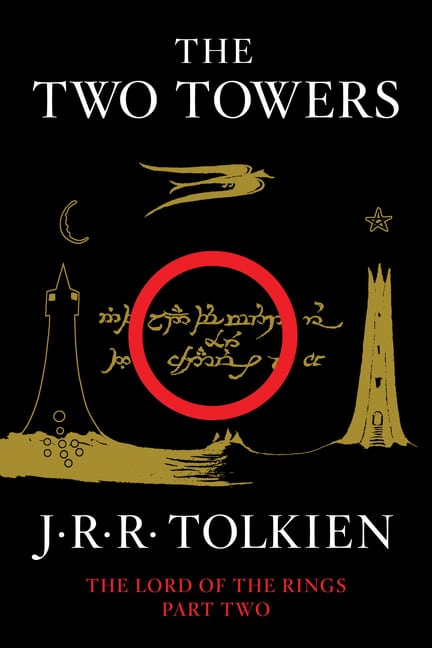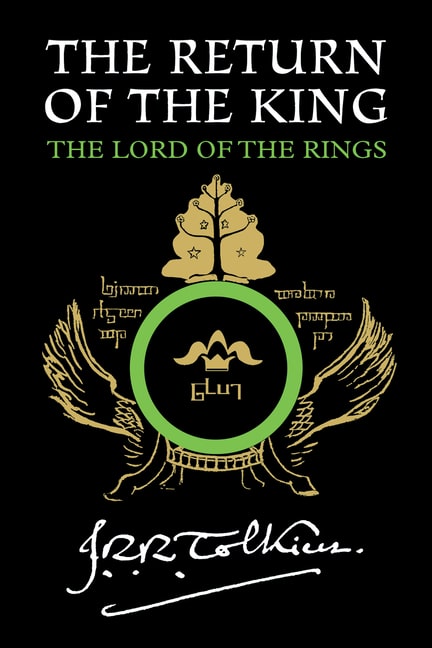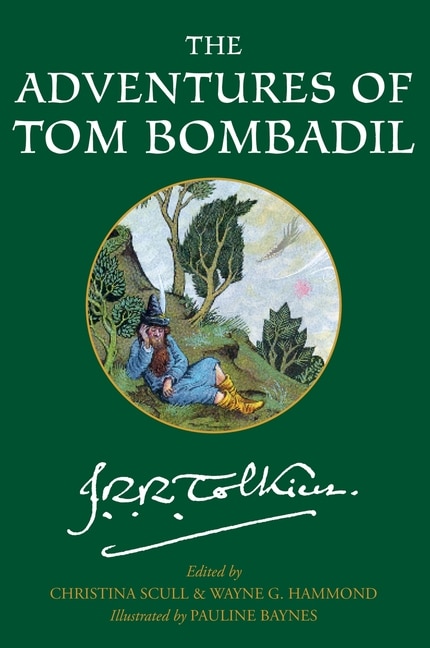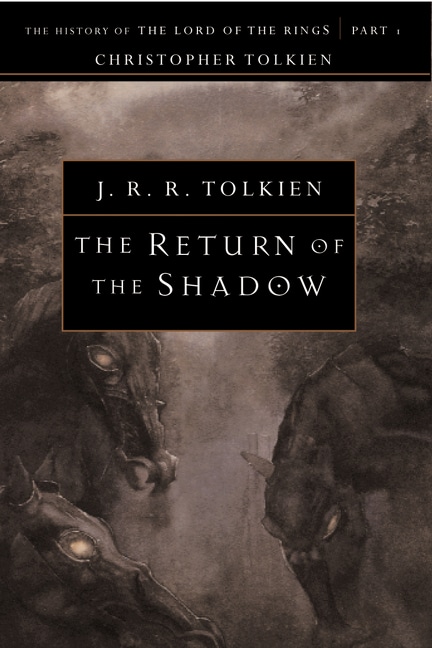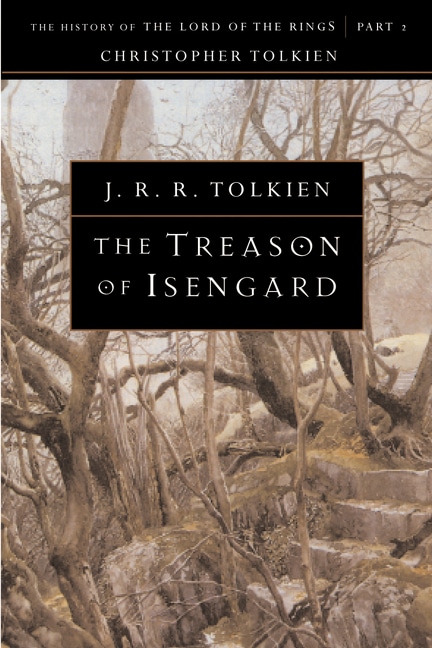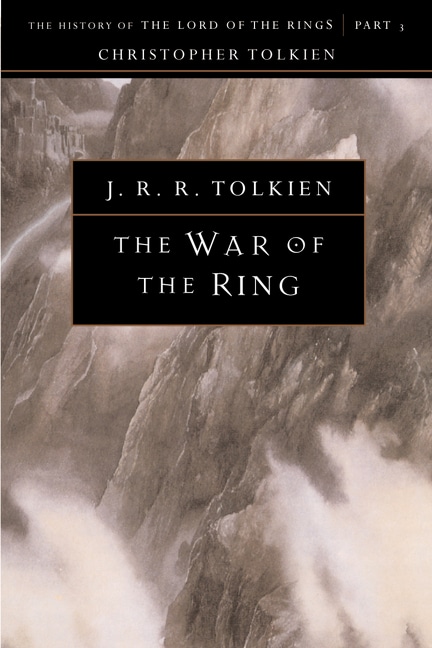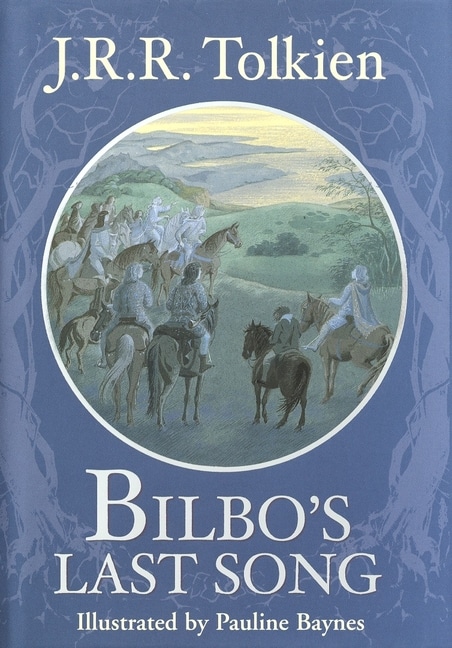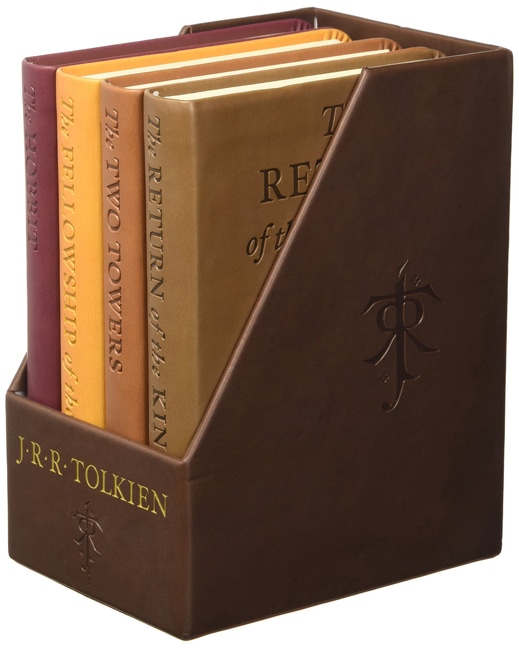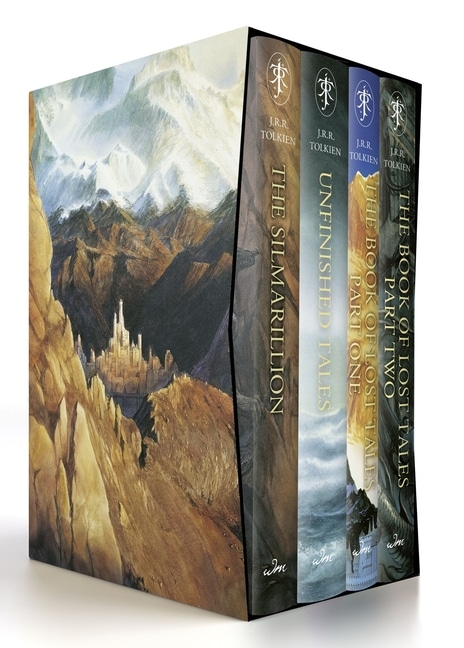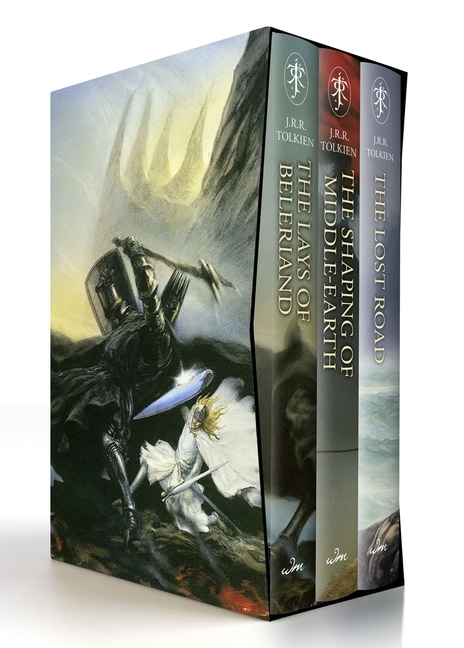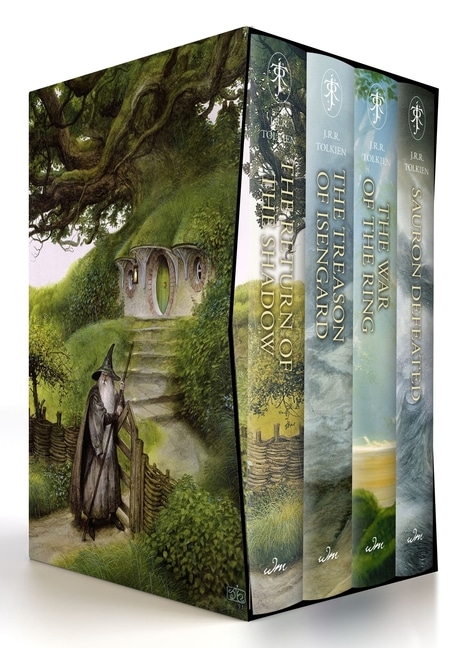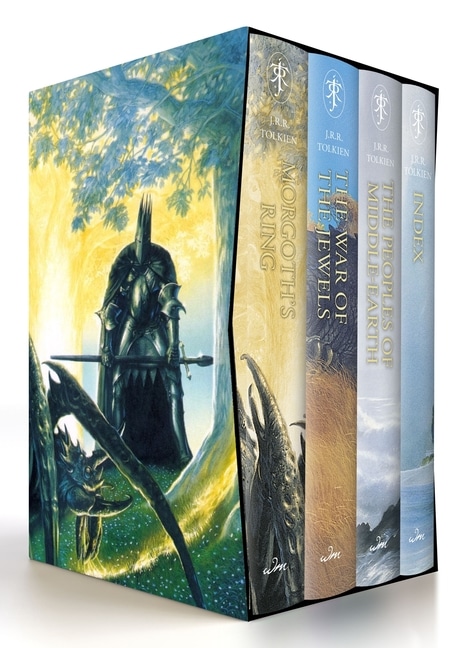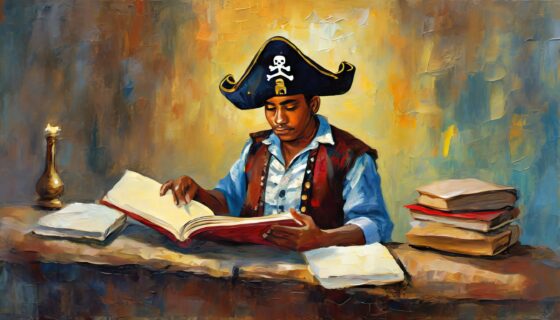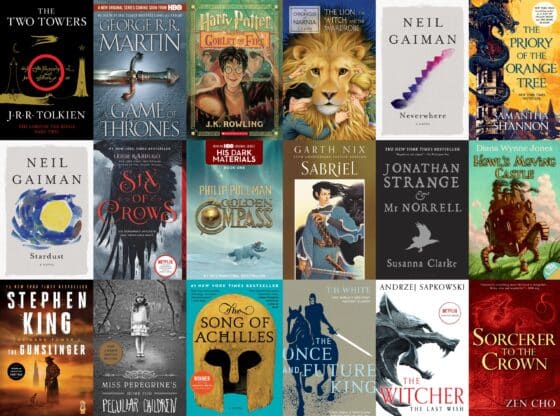How to Read J. R. R. Tolkien Books in Order: It seems like a simple question that should have a simple answer: How, exactly, do you read every J. R. R. Tolkien book in order? Everyone knows about the classic trilogy and the prequel, also known as The Hobbit: Or There and Back Again. But for those of us who’ve read these books already, we can’t help but wonder, “What else is there in the J. R. R. Tolkien universe?”
That question also seems like one with a straightforward answer, but from the research we’ve done, there doesn’t seem to be an all-encompassing guide (yet). Many websites reference 6-8 different books, while others discuss over 15.
But fear not! We’ve decided this is a quest worth embarking on and have intently researched to compile this post, walking through each of J. R. R. Tolkien’s works over the years. Grab yourself some Second Breakfast, and let’s explore Middle-earth.
What is Middle-earth?
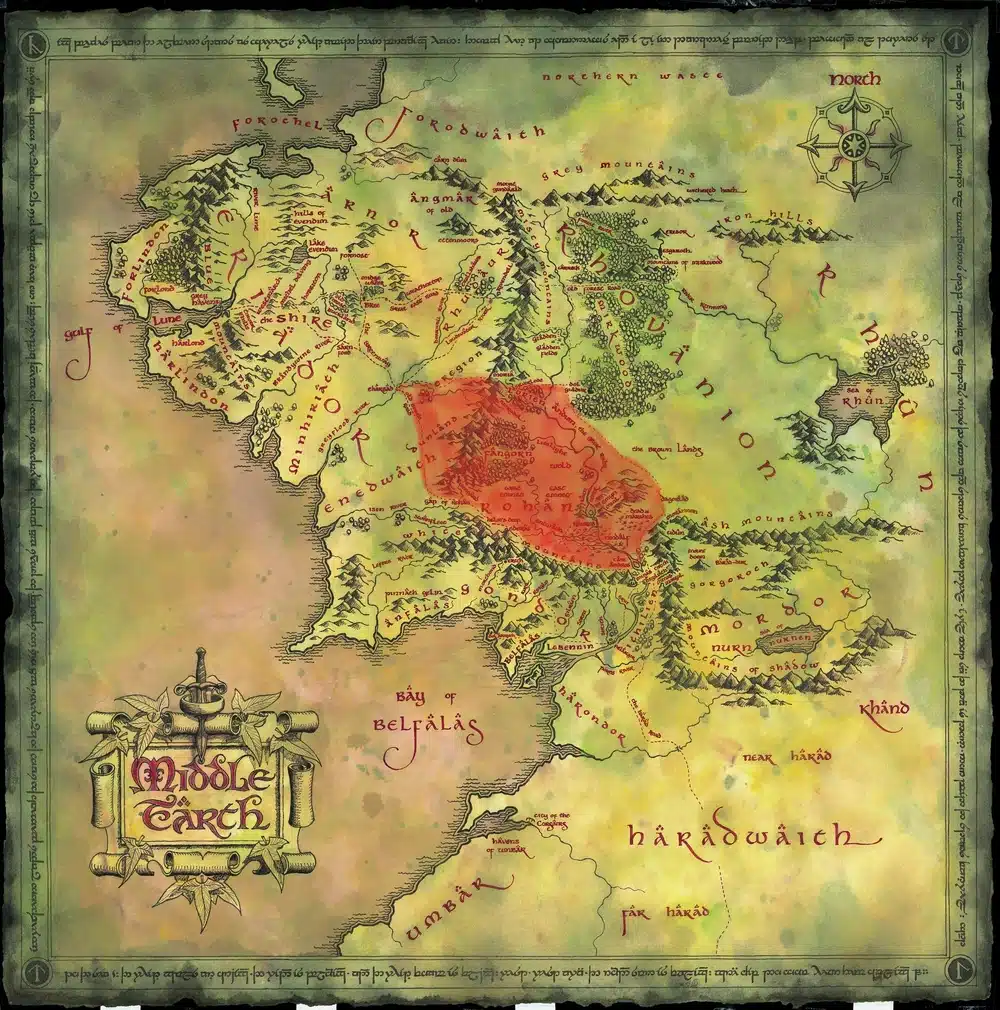
For those unfamiliar with the setting of the famous LOTR trilogy and The Hobbit, Middle-earth is the detailed fantasy world created by J. R .R. Tolkien. It is part of a larger world called Arda and is home to various races like Elves, Dwarves, Men, and Hobbits. The richness of its history, languages, and cultures makes it a deeply immersive setting.
The timeline of Middle-earth is divided into three Ages (in this post, four). The First Age focuses on the Elves and their battles against the dark lord Morgoth, mainly covered in The Silmarillion. The Second Age highlights the rise and fall of Númenor and the creation of the Rings of Power, setting the stage for later stories. The Third Age features the events of The Hobbit and The Lord of the Rings, spotlighting characters like Bilbo and Frodo Baggins, Gandalf, and Aragorn and culminating in the fall of Sauron. The fourth age is simply an all-encompassing term for everything after the third age.
Understanding this chronological framework can enhance your reading experience by revealing how the stories interconnect within Tolkien’s richly crafted world. Before we list the books in order, let’s first better understand how time works in Middle-earth as it relates to how time works on Earth.
Understanding the Middle-earth Units of Time
| Time Unit | Earth Days Equivalent |
| 1 Year of the Sun | Approximately 365.24 days |
| 1 Yén | 144 Years of the Sun = 52,585.76 days |
| First Age | 3441 Years of the Sun = 1,256,144.44 days |
| Second Age | 7053 Years of the Sun = 2,576,037.72 days |
| Third Age | 3021 Years of the Sun = 1,103,134.04 days |
Understanding the Middle-earth Timeline
| Age | Years of the Sun |
| First Age | 1 to 590 |
| Second Age | 591 to 4031 |
| Third Age | 4032 to 7052 |
| Fourth Age (Post-LOTR) | 7053 and beyond |
All J. R. R. Tolkien Books in Order (Chronologically)
Now that we all understand Middle-earth, its ages, and its timelines, without further delay, we are proud to present our list of J.R.R. Tolkien books in chronological order for the best reading experience possible. For ease, we have split our list into four parts by the age in which the story took place.
Because there is nothing more annoying to us than when we are trying to find a quick answer and are spammed with rambling paragraphs (such as this one) unrelated to anything we care about, we will compile a quick list of each book in order and then go into more detail below for those interested. So, to get the best J. R. R. Tolkien reading experience, here is our thoughtfully researched list—please keep in mind the storyline in some books span multiple ages:
First Age
The First Age begins with the awakening of the Elves and ends with the War of Wrath, the great conflict that leads to Morgoth’s defeat and the reshaping of the world.
- The Book of Lost Tales, Part One
- The Book of Lost Tales, Part Two
- The Lays of Beleriand
- The Shaping of Middle-earth
- The Silmarillion
- Morgoth’s Ring
- The War of the Jewels
- The Children of Húrin
- Beren and Lúthien
- The Fall of Gondolin
Second Age
This era starts after the War of Wrath and features the rise and fall of Númenor, the creation of the Rings of Power, and ends with the defeat of Sauron in the War of the Last Alliance.
- The Silmarillion (Sections including “Akallabêth”)
- Unfinished Tales
- The Lost Road and Other Writings
- Sauron Defeated
- The Fall of Númenor
Third Age
Begins with the defeat of Sauron and the reign of the last High King of the Noldor, ending with the conclusion of “The Lord of the Rings” and the departure of the Ring-bearers from Middle-earth.
- The Hobbit
- The Fellowship of the Ring
- The Two Towers
- The Return of the King
- The Adventures of Tom Bombadil
- Unfinished Tales
- The Return of the Shadow
- The Treason of Isengard
- The War of the Ring
- Sauron Defeated
- The Peoples of Middle-earth
Fourth Age
The Fourth Age begins after the departure of the Ring-bearers and Sauron’s defeat, marking the beginning of Men’s dominion.
- The Peoples of Middle-earth
Supplementary Works
These stories, while amazing, don’t fully fit within the standard format of the other books, so we’ve added them here since they are definitely worth reading.
- The Road Goes Ever On: A Song Cycle
- Bilbo’s Last Song
How to Understand J. R. R. Tolkien’s Middle-earth Books Order
Now that we’ve listed each book in chronological order, there’s one other topic to take care of. Understanding J.R.R. Tolkien’s Middle-earth books can be a bit like unpacking nesting dolls. While this guide lists standalone books in chronological order of the timeline, it’s helpful to know that they can be grouped into mini-series and overarching narratives (i.e. you don’t have to buy each book on its own; there are several box sets that beautifully group various books together).
For instance, The Lord of the Rings is a trilogy that follows the events of The Hobbit, while The Silmarillion and other First Age tales form a mythic prequel to both. Christopher Tolkien’s The History of Middle-earth series dives deep into drafts and essays, offering a scholarly exploration of these timelines.
So, while each book can be read independently, many are part of interconnected series that enhance Middle-earth’s broader lore and richness (and improve ease of buying). In any case, let’s explore each of the books we listed above in more detail. We will list our favorite box sets at the bottom of this post for those looking to acquire each title easily.
Books From the First Age (in More Detail)
The First Age is the foundational era of Middle-earth, covering its earliest history and lasting several thousand years. It begins with the creation of the world and the emergence of the Valar, powerful beings who shape the land. This Age is marked by the awakening of the Elves and their great conflicts with Morgoth, the first dark lord.
Epic tales of heroism and tragedy unfold, including legendary battles and the forging of the Silmarils—three immensely powerful jewels that become central to many of the First Age’s stories. Key works like “The Silmarillion,” “The Children of Húrin,” “Beren and Lúthien,” and “The Fall of Gondolin” delve into these intricate narratives, setting the stage for Middle-earth’s complex history.
The Book Of Lost Tales: Part One
The Book Of Lost Tales: Part Two
The Lays of Beleriand
The Shaping of Middle-Earth
The Silmarillion
Morgoth’s Ring
The War of the Jewels
The Children of Húrin
Beren And Lúthien
The Fall Of Gondolin
Books From the Second Age (in More Detail)
The Second Age follows the cataclysmic events at the end of the First Age and spans over 3,400 years. This period is dominated by the rise and fall of Númenor, a powerful island kingdom of Men gifted with long life. During this age, Sauron, Morgoth’s former lieutenant, emerges as a significant threat.
The creation of the Rings of Power, including the One Ring, and the eventual downfall of Númenor are pivotal events. “The Silmarillion” (particularly “Akallabêth”) and “Unfinished Tales” include essential stories from this era, offering insights into the complex relationships and power struggles that shape the future of Middle-earth.
The Silmarillion
Unfinished Tales: Illustrated Edition
The Lost Road and Other Writings
Sauron Defeated
The Fall of Númenor: And Other Tales from the Second Age of Middle-earth
Books From the Third Age (in More Detail)
The Third Age lasts over 3,000 years and is the age most familiar to readers, encompassing the narratives of “The Hobbit” and “The Lord of the Rings.” This age begins with the downfall of Sauron in his first defeat and sees the rise and fall of many kingdoms. It highlights the re-emergence of the One Ring and the quest to destroy it, involving characters like Bilbo Baggins, Frodo Baggins, Gandalf, and Aragorn.
The age concludes with the War of the Ring, the final defeat of Sauron, and significant changes in the political landscape of Middle-earth. Key works for this age include “The Hobbit,” “The Fellowship of the Ring,” “The Two Towers,” “The Return of the King,” and relevant stories in “Unfinished Tales.”
The Hobbit
The Fellowship of the Ring
The Two Towers
The Return of the King
The Adventures of Tom Bombadil
Unfinished Tales: Illustrated Edition
The Return of the Shadow
The Treason of Isengard
The War of the Ring
Sauron Defeated
The Peoples of Middle-earth
This book is unbelievably hard to find as a stand-alone title, but it can easily be purchased as part of a boxed set. However, it is worth noting this volume provides a deep dive into the characters and cultures that populate Middle-earth, from lesser-known Elves to the nuanced histories of the Dúnedain.
Supplementary Works (in More Detail)
While not perfectly in line with the other books in the Middle-earth world, these titles are fun additives to your Tolkien repertoire.
The Road Goes Ever On: A Song Cycle
This book, a collaboration with musician Donald Swann, sets Tolkien’s poems to music. It includes songs and poems from “The Lord of the Rings” and other Middle-earth writings, giving fans a musical route into Tolkien’s world. This title is difficult to find and can only be acquired from some used bookstores lucky enough to have a copy.
Bilbo’s Last Song
How to Buy Every J. R. R. Tolkien Book
You may have noticed not every book we listed above is available in our store. This is because several lesser-known books are no longer sold as stand-alone books and can only be acquired used or as part of a boxed set. Though this might seem like an inconvenience, we have to say the boxed sets are very beautifully designed and well-thought-out (and we are suckers for used books since they are better for the environment).
From here on, we will list the best boxed sets and stand-alone books that ensure you get the best possible reading experience and (almost) every J. R. R. Tolkien book that has been published.
Boxed Sets
While most of these titles can be purchased as standalone books (except for a few), these boxed sets make hunting them down a piece of cake (and more affordable in the long run than buying them separately).
The Hobbit and The Lord of the Rings: Deluxe Pocket Boxed Set
The History of Middle-earth Box Set #1: The Silmarillion / Unfinished Tales / Book of Lost Tales, Part One / Book of Lost Tales, Part Two
The History of Middle-earth Box Set #2: The Lays of Beleriand / The Shaping of Middle-earth / The Lost Road
The History of Middle-earth Box Set #3: The Return of the Shadow / The Treason of Isengard / The War of the Ring / Sauron Defeated
The History of Middle-earth Box Set #4: Morgoth’s Ring / The War of the Jewels / The Peoples of Middle-earth / Index
Standalone Books
These titles can only be purchased as standalone books.
The Children of Húrin
Beren And Lúthien
The Fall Of Gondolin
The Adventures of Tom Bombadil
Bilbo’s Last Song
The End of a Journey
Well, we truly hope you found this guide helpful and informative. After not finding anything this detailed and accurate online, we decided to embark on this post in hopes that future LOTR fans will have an easier time figuring out how to start their reading journey.
This post will inevitably become outdated as new editions hit the market, but we will try our best to stay with the times and keep everything as accurate as possible. For more helpful tips and tricks, check out the rest of our blog, and as always, keep on adventuring!
